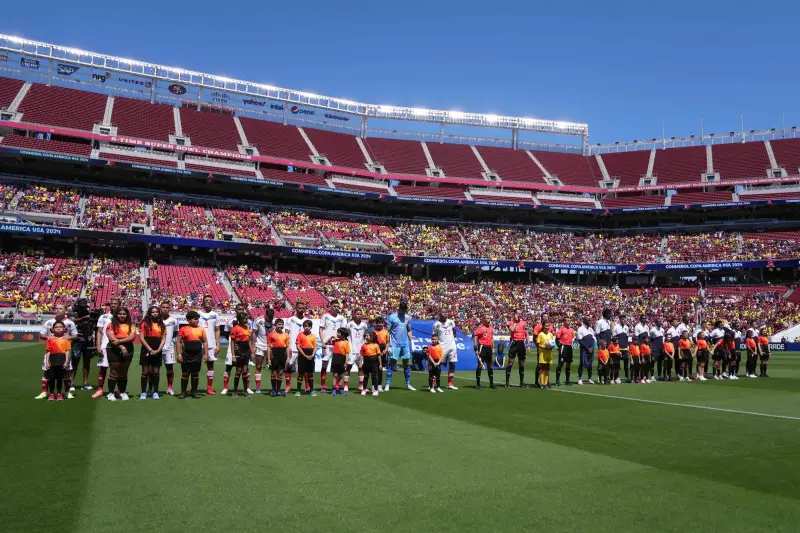
Sparse Crowds in Early Matches
If you’ve seen a few photos on social media or watched a 2024 Copa América match, you might have noticed a concerning trend: empty seats. So far, only 71% of stadium capacities have been filled, with a mere 64% occupancy through the first six games. Despite being touted as a competition on par with the European Championships, the attendance at Copa América has been notably lower.
Factors Contributing to Low Attendance
The reasons for the low turnout are multifaceted, involving ticket prices, marketing strategies, macroeconomics, geography, urban planning, and public transportation. However, the most significant factor appears to be the sheer size of the stadiums.
Stadium Capacities: More Seats, More Empty Ones
The 2024 Copa América is averaging 51,592 fans per game, which is higher than Euro 2024’s average of 50,990. However, the visuals differ because seven of the ten German stadiums hosting Euro 2024 seat 40,000-55,000 people, while the Copa América is played in NFL stadiums that hold 60,000-80,000 spectators.
Ticket Prices: A Barrier for Fans
One primary reason for the empty seats is the high cost of tickets. The average price of a Copa América ticket has been over $200, with even the cheapest seats costing more than $100. Lower-bowl tickets for high-demand matches, such as Argentina vs. Chile, have been priced at over $500. This dynamic pricing strategy, designed to maximize profits, contrasts with the fixed pricing model used in Europe, where group-stage tickets ranged from €30 ($32) to €200 ($215).
High Travel Costs
Another significant factor is the cost of travel. Many NFL stadiums are inaccessible via public transportation, adding parking fees and other expenses to the cost of attending a match. This issue is particularly pronounced for Copa América’s core audience: soccer fans from South America. For example, traveling from Argentina to New York can cost over $1,000 in airfare alone, making it prohibitive for many fans.

The Impact of Economic Disparities
The economic disparities between South American countries and the United States further complicate matters. The strength of the U.S. dollar compared to South American currencies makes attending the tournament financially unfeasible for many fans from the continent. Additionally, obtaining a U.S. visa can be a lengthy and challenging process.
Diverse and Unevenly Distributed Audiences
The target audience for the 2024 Copa América has primarily been American, particularly Latino communities. However, Latin American diasporas are not evenly distributed across the U.S. For example, while there are over 37 million Mexican Americans, there are fewer than 100,000 Uruguayans and Paraguayans. This uneven distribution affects the demand for tickets, leading to varying attendance figures for different matches.
Specific Match Attendance
- Colombia vs. Venezuela: 67,059 in Houston
- Brazil vs. Costa Rica: 67,158 at SoFi Stadium in Los Angeles
- Argentina: Sold out Mercedes-Benz Stadium in Atlanta
- Venezuela vs. Ecuador: Sparse attendance at Levi’s Stadium in Santa Clara
- Uruguay vs. Panama: Low turnout in Miami
- Mexico vs. Jamaica: 53,763 at NRG Stadium in Houston, 18,000 below capacity
Market Saturation and Event Fatigue
There is also a sense of market fatigue. Many teams regularly play friendlies in the U.S., and the six CONCACAF teams have participated in Gold Cups and Nations League finals. This familiarity might reduce the perceived uniqueness and significance of Copa América matches.
Conclusion
The 2024 Copa América has faced several challenges in filling stadiums, from high ticket prices and travel costs to economic disparities and market saturation. Addressing these issues could help improve attendance and enhance the overall atmosphere of this prestigious tournament.
Would you like a list of keywords for digital marketing, content strategy development, PPC campaigns, social media engagement, or email marketing campaigns? Additionally, would you be interested in related topics to create more content?(747Live)




